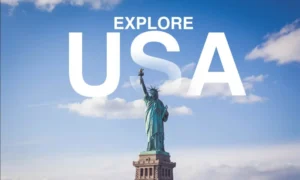Best National Parks In Utah [Top 5 National Parks to Visit]
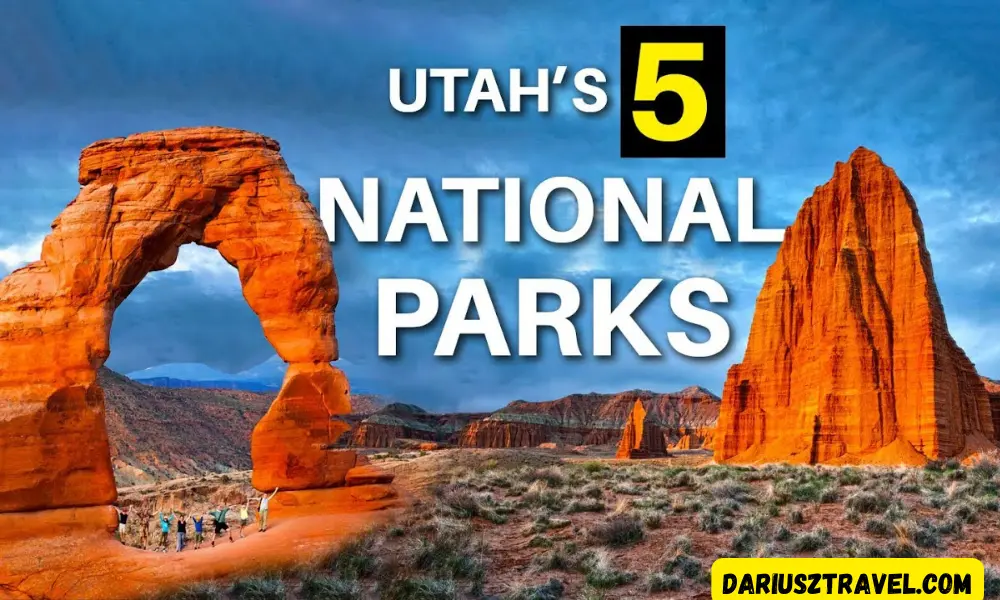
Utah, the Beehive State, is a land of enchanting landscapes and natural wonders that beckon travelers from all corners of the world. Its unique terrain, characterized by towering red rock formations, sprawling canyons, and otherworldly geological features, is home to some of the most stunning national parks in the United States.
In this comprehensive guide, we will embark on a journey through the Best National Parks in Utah, uncovering the hidden treasures and awe-inspiring beauty of these natural wonders. From the iconic arches of Arches National Park to the majestic canyons of Zion, and the surreal landscapes of Bryce Canyon, Utah’s national parks offer a diverse and captivating adventure for every nature enthusiast.
Arches National Park
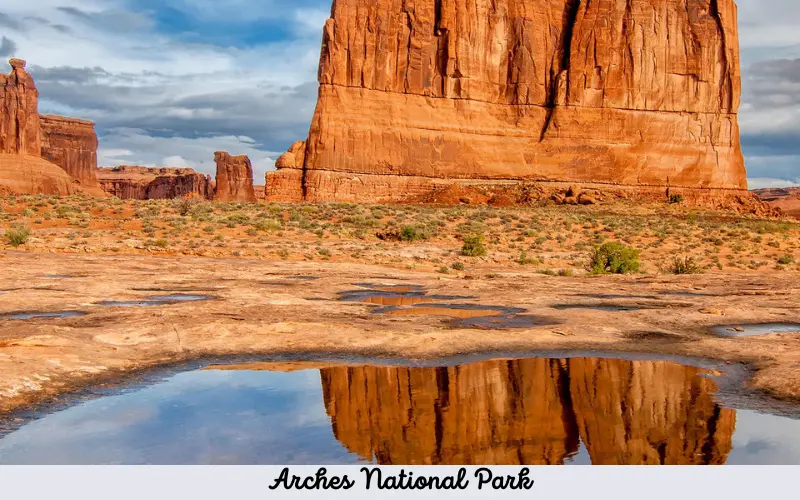
Arches National Park, a mesmerizing natural wonderland located in the heart of Utah, is a testament to the forces of erosion and time. Spanning over 76,000 acres, this park is a geological marvel renowned for its iconic red rock arches and sandstone formations that have been sculpted over millions of years.
Overview of Arches National Park
Arches National Park, established in 1971, is one of the Best National Parks In Utah. The park is situated just a short drive from the picturesque town of Moab, making it easily accessible to visitors. It’s renowned not only for its arches but also for its unique pinnacles, balanced rocks, and fins, all of which have been etched by the forces of wind and water.
Iconic Red Rock Arches and Formations
The highlight of Arches National Park is undoubtedly its collection of more than 2,000 natural stone arches. These arches, formed by a delicate dance of erosion and weathering, create an otherworldly landscape that is unlike any other. The most famous among them is the Delicate Arch, an iconic symbol of Utah, with its graceful curve of red sandstone framing the distant La Sal Mountains. Landscape Arch, one of the longest in the world, is another must-see marvel, with its slender span that defies gravity. And these are just a few examples of the jaw-dropping arches that await you in this park.
Popular Trails and Viewpoints
To truly immerse yourself in the magic of Arches, the park offers a network of well-maintained hiking trails, varying in difficulty. Delicate Arch Trail is the most popular, leading you on a moderately strenuous trek to the famous Delicate Arch viewpoint. The Landscape Arch Trail, on the other hand, is an easy stroll suitable for all ages and offers views of the longest arch in the park.
For those seeking a bit of adventure, the Devil’s Garden Trail is a fantastic option. It leads you to numerous arches, including the stunning Double O Arch and the primitive trail for those looking to explore the rugged backcountry.

Most Iconic Rock Arches in the World
Arches National Park, in particular, is home to over 2,000 natural arches, making it the highest concentration of arches in the world. The park’s Delicate Arch is one of the most famous and photographed natural arches globally.
Visitor Tips and Unique Experiences
Visiting this one of the the Best National Parks In Utah requires some planning and preparation. To make the most of your experience, consider the following tips:
1. Timing is Everything: The best time to visit is during the spring and fall when the weather is milder. Summer can be scorching, and winter can bring snow, potentially limiting access.
2. Stay Hydrated: The desert climate can be deceptively dry. Be sure to carry plenty of water, especially when hiking.
3. Sunset Spectacular: The warm hues of the arches come alive during sunset. Don’t miss the chance to witness this magical transformation.
4. Stargazing: Arches is designated as a Dark Sky Park, making it a fantastic spot for stargazing. The night skies here are simply breathtaking.
5. Respect Nature: As with all national parks, it’s essential to follow Leave No Trace principles and protect the fragile desert environment.
Zion National Park
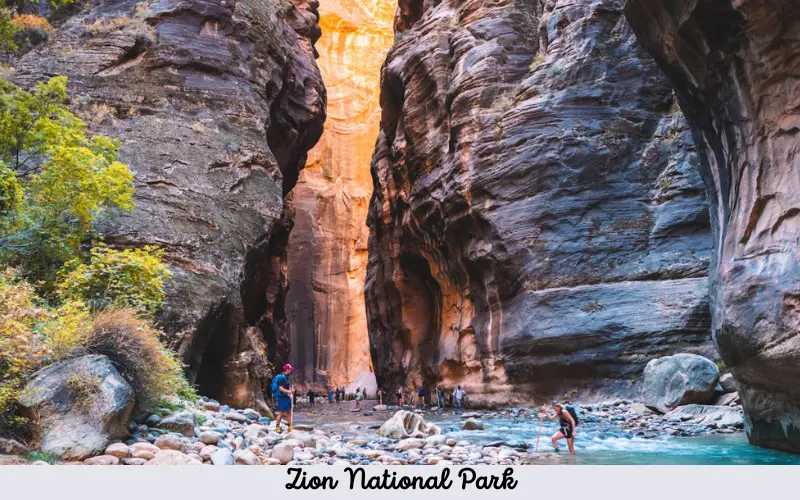
Nestled in the southwestern corner of Utah, Zion National Park is a place of unparalleled beauty, where nature’s handiwork is on full display. With its towering canyons, majestic cliffs, and crystal-clear emerald pools, Zion offers a breathtaking contrast to the red rock arches of Arches National Park. Let’s embark on a journey to explore the wonders of Zion and uncover the best ways to experience this remarkable landscape.
Introducing the Wonders of Zion National Park
Zion National Park, Utah’s first national park, is a place where the forces of nature have sculpted a masterpiece. This geological marvel is home to soaring red rock walls and deep, narrow canyons carved by the Virgin River. The park’s centerpiece, Zion Canyon, offers a dramatic landscape of towering sandstone cliffs, some reaching over 2,000 feet in height. The rich history of human habitation in the area adds depth to the park, with remnants of Native American cultures and early settlers.
Stunning Canyons, Cliffs, and Emerald Pools
Zion’s most prominent features are its canyons and cliffs. Zion Canyon itself is a sight to behold, with its verdant riparian habitat surrounded by towering rock walls. As you journey deeper into the park, you’ll encounter iconic formations like the Court of the Patriarchs and the Great White Throne.
One of the most enchanting experiences in Zion is exploring the emerald pools. These lush oases are nestled within the canyons and offer a refreshing contrast to the surrounding arid landscape. Lower Emerald Pool is an easy hike, leading to a secluded cave and a tranquil pool. Middle and Upper Emerald Pools are accessible through slightly more challenging trails, but the reward is the sight of cascading waterfalls and hidden nooks.
Must-Visit Trails and Adventures
Zion National Park is a heaven for outdoor enthusiasts and hikers. Here are some must-visit trails and adventures:
Tips for Enjoying the Park Responsibly
To make the most of your visit to Zion National Park and ensure you’re responsible stewards of this natural wonder, consider the following tips:
Bryce Canyon National Park
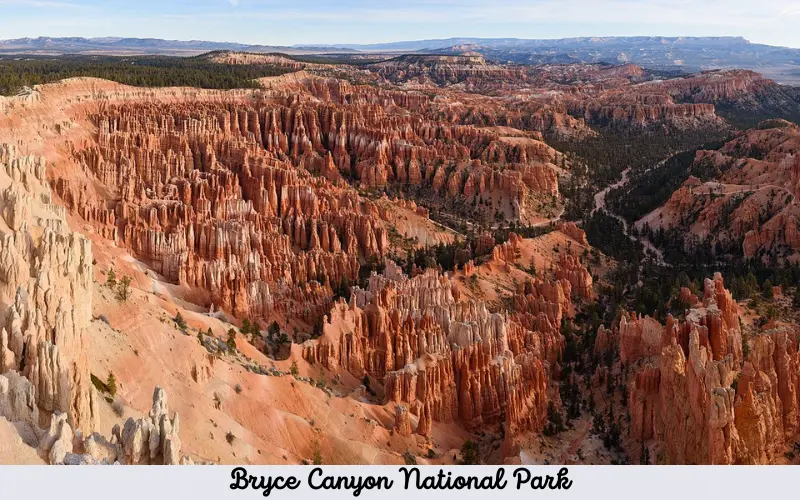
Bryce Canyon National Park, often described as a realm of otherworldly beauty, is a place where the forces of nature have created a landscape that seems plucked from the pages of a fantasy novel. Its unique geological formations, known as hoodoos, and its natural amphitheaters are a testament to the remarkable power of erosion. In this section, we’ll delve into the enchanting world of Bryce Canyon, providing insights into its fascinating features and the best ways to experience them.
Beauty of Bryce Canyon
Bryce Canyon National Park is a land of dreams and enchantment, where the very earth appears to have been sculpted by the hand of an artist. The park’s most distinctive feature is its amphitheaters filled with a mesmerizing array of hoodoos. These spire-shaped rock formations, each unique in their shape and size, create an almost surreal and alien landscape that draws visitors from around the world.
Hoodoos and Amphitheaters
The hoodoos in Bryce Canyon are formed through the process of frost-wedging and erosion. Ice forms in the cracks of the rock, expanding and contracting, gradually breaking the rock into these stunning, slender structures. The arenas, such as Bryce Amphitheater, are natural bowls that cradle these hoodoos, creating a visual spectacle that is unmatched in its beauty.
The colors of the rock formations in Bryce Canyon are a painter’s palette of reds, oranges, and yellows. Depending on the time of day, the interplay of sunlight and shadow brings the hoodoos to life, making each moment a new and captivating scene.
Best Vantage Points and Hiking Trails
To truly appreciate the grandeur of Bryce Canyon, consider visiting these best vantage points and hiking trails:
Stargazing Opportunities
One of the lesser-known secrets of this one of the Best National Parks In Utah is its exceptional stargazing opportunities. The park has received International Dark Sky Park certification, making it a prime destination for astronomy enthusiasts. With its high elevation and minimal light pollution, Bryce Canyon offers unparalleled views of the night sky. The annual Bryce Canyon Astronomy Festival is a fantastic opportunity to explore the cosmos with the help of experienced astronomers.
Bryce Canyon National Park is a place where fantasy becomes reality. Its hoodoos, amphitheaters, and vivid colors create a landscape that will leave you in awe. Whether you’re hiking through the labyrinth of hoodoos or gazing at the stars in the dark desert sky, Bryce Canyon is a destination that promises an unforgettable and almost otherworldly experience.

Utah’s National Parks are Popular for Stargazing
Utah’s national parks are renowned for their exceptional dark skies. Capitol Reef National Park, in fact, was designated as an International Dark Sky Park in 2015, and Bryce Canyon and Canyonlands have also received this distinction. These parks offer some of the best stargazing experiences in the United States, with clear views of the Milky Way and countless stars.
Canyonlands National Park
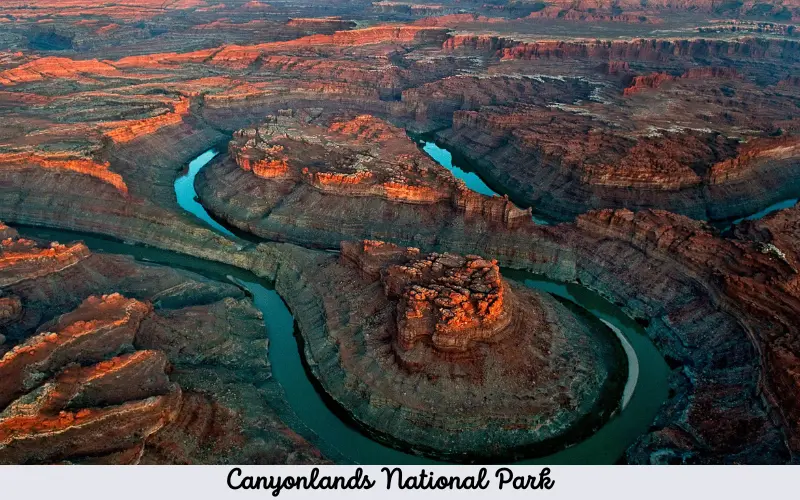
Canyonlands National Park, a hidden gem in the heart of the American Southwest, is a testament to the captivating diversity of nature’s grandeur. With its dramatic landscapes, where the Green River and the Colorado River converge, and a variety of recreational opportunities, Canyonlands beckons adventurers to explore its rugged beauty. In this section, we will uncover the allure of Canyonlands, providing insights into its unique features and the best ways to experience them.
The Diverse Landscapes of Canyonlands
Canyonlands National Park is often referred to as the “Land of the Sleeping Rainbow” due to its intricate network of canyons, mesas, arches, and buttes, all painted in an array of colors. The park is divided into four districts, each with its distinct character.
Green River and Colorado River Confluence
The convergence of the Green River and the Colorado River within Canyonlands is a breathtaking natural phenomenon. The confluence, located in the heart of the park, is a place of raw, untamed beauty. The two rivers meet in a spectacular collision of water and geology, carving deep canyons and sculpting the landscape in their wake. The view from Grand View Point provides an awe-inspiring vantage point to witness this majestic meeting of rivers.
Hiking, Boating, and Scenic Drives
This one of the Best National Parks In Utah offers a wide range of recreational opportunities, catering to every type of adventurer:
Mentioning Unique Geology and Viewpoints
Canyonlands is a geologist’s dream, with its intricate rock layers, exposed faults, and natural bridges. Notable geological features include Upheaval Dome, an enigmatic impact crater, and the Maze Overlook, which offers a glimpse into the park’s remote Maze district. For breathtaking viewpoints, don’t miss Dead Horse Point, a separate state park adjacent to Canyonlands, offering stunning views of the Colorado River meandering through the canyons below.
Also, the iconic Mesa Arch frames the sunrise in a dramatic display of nature’s artwork. This one of the Best National Parks In Utah is a treasure trove of diverse landscapes, from towering mesas to deep canyons and roaring rivers. Whether you’re hiking, boating, or simply taking in the panoramic views from its numerous overlooks, the park promises an exploration of unparalleled natural beauty.
Capitol Reef National Park

Capitol Reef National Park, a hidden treasure in the heart of southern Utah, is a place where history and geology converge to create a remarkable tapestry of natural beauty. With a rich history, distinctive rock formations, and a range of activities to suit all interests, Capitol Reef beckons adventurers to explore its wonders. In this section, we will introduce you to the captivating story of Capitol Reef, provide insights into its unique geological features, recommend activities for all tastes, and guide you through seasonal considerations when planning your visit.
Introducing Capitol Reef’s Rich History
Capitol Reef National Park is a place where human history intersects with geological history. The park’s name, “Capitol Reef,” was inspired by the white domes of rock that resemble the U.S. Capitol Building and the word “reef” due to its rugged terrain. It’s an area with a rich cultural heritage, once inhabited by the Fremont people, and later explored by Mormon pioneers. You can explore remnants of these early settlements, such as the Gifford Homestead, where time seems to stand still.
Waterpocket Fold and Rock Formations
The park’s most prominent geological feature is the Waterpocket Fold, a nearly 100-mile-long warp in the Earth’s crust, creating a stunning landscape of towering cliffs, domes, canyons, and deep, narrow gorges. The park’s rock formations showcase a spectrum of colors and textures, from the golden hues of the Navajo sandstone to the red rock of the Wingate Formation. Capitol Reef’s most iconic feature is the Cassidy Arch, known for its captivating view and its association with the infamous outlaw Butch Cassidy, who used the park’s canyons as hideouts.
Trails and Activities for All Interests
Whether you’re an avid hiker, a history buff, or a casual nature enthusiast, Capitol Reef offers a range of activities:
Seasonal Considerations for Visiting
The best time to visit Capitol Reef depends on your preferences:
Tips for Exploring Utah’s National Parks
Planning a trip to Utah’s national parks requires careful preparation to ensure a memorable and safe adventure. In this section, we’ll provide you with practical advice to help you make the most of your visit to Arches, Zion, Bryce Canyon, Canyonlands, and Capitol Reef National Parks.
Practical Advice for Planning a Trip
1. Itinerary Planning: Create a detailed itinerary that outlines which parks you’ll visit, the duration of your stay in each, and the activities you’d like to pursue.
2. Permits and Passes: Be aware that some activities, such as backcountry hiking or river trips, may require permits. Purchase the America the Beautiful Pass for access to all national parks in the U.S.
3. Reservations: Popular parks can get crowded, so make camping and accommodation reservations well in advance, especially during peak seasons.

Statistical Data
Canyonlands National Park, one of Utah’s “Big Five” national parks, covers a vast expanse of 337,598 acres, making it the largest national park in the state. The park’s size is almost five times that of Arches National Park.
The Best Times to Visit and Park Fees
1. Seasonal Considerations: Each park has its ideal season. Spring and fall are normally the most suitable times to dwell, as the weather is favorable. Summers can be hot, and winters can be cold, but they offer unique experiences.
2. Entrance Fees: National parks typically have entrance fees. Review the authorized National Park Service website for up-to-date fee details. Consider an annual pass if you plan to visit multiple parks.
Insights on Accommodations and Nearby Towns
1. Camping: Many of the parks offer campgrounds, but they can fill up quickly. Reservations are often necessary. Backcountry camping is available in some parks with a permit.
2. Lodging: Nearby towns like Moab, Springdale, Bryce, and Torrey offer accommodations ranging from hotels to vacation rentals. Book your stay early, especially during peak travel seasons.
3. Dining: Bring your food for convenience, as dining options within the parks can be limited. Ensure you have enough water during your visit, as desert environments are often dry.
Safety and Environmental Conservation Tips
1. Hydration: Stay well-hydrated, especially during hot months. Carry reusable water bottles to minimize plastic trash.
2. Hiking Safety: Always let someone know your hiking plans, carry a map and plenty of water, and wear appropriate clothing and sun protection.
3. Wildlife: Observe wildlife from a safe distance. Do not feed animals, as it can harm them and is against park regulations.
4. Leave No Trace: Respect the parks’ delicate ecosystems by following Leave No Trace principles. Dwell on established tracks, plug out all garbage, and avoid upsetting plants and wildlife.
5. Dark Sky Etiquette: If you’re interested in stargazing, minimize light pollution by using red-filtered flashlights and turning off vehicle lights.
6. Weather Awareness: Be prepared for sudden weather changes, especially in the desert. Check park alerts and weather forecasts before heading out.
Conclusion
In the heart of Utah’s awe-inspiring landscapes lie some of the most breathtaking natural wonders the world has to offer. From the gravity-defying arches of Arches National Park to the majestic canyons of Zion, the ethereal hoodoos of Bryce Canyon, the rugged beauty of Canyonlands, and the historical and geological marvels of Capitol Reef, Utah’s national parks are a testament to the unparalleled artistry of nature.
But these parks are more than just picturesque backdrops for adventure; they are our shared heritage, a testament to the eons of natural processes that have shaped the earth. They are places where stories of early civilizations, pioneering spirits, and the power of the elements are etched into every rock and canyon. These are the best national parks in Utah, and they are an invitation to embark on a journey of a lifetime.





